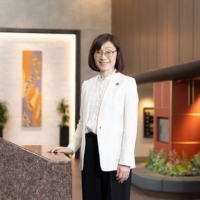Even by Tokyo standards, it's a mob scene. Over a span of just three days, roughly 3.5 million people will crowd onto the gravel-covered paths of Meiji Shrine and inch their way toward the altar to toss coins, offer prayers and buy charms in a tradition repeated across Japan every New Year's.
The pilgrimages, called "hatsu-moude," or first visits, are one of Japan's most cherished customs, along with cherry blossom viewing in the spring and paying respects at the family grave during the summer, when tens of millions of Japanese return to their hometowns and the country virtually shuts down for several days.
According to the National Police Agency, 85.97 million people -- in a nation of 120 million -- are expected to make pilgrimages to temples or shrines in the first three days of the new year.
Though made to Buddhist or Shinto altars, the pilgrimages aren't especially religious. Most Japanese have a relatively casual attitude toward their religious affiliations, and the New Year's visits are more of a chance to dress up, shop for lucky charms and socialize than they are an opportunity to pray.
"At most shrines and temples, anyone, regardless of what religion one subscribes to, can pay a visit and pray," said Masatoshi Miyano, of Narita Shinshoji Temple in Chiba Prefecture.
"I think that is why the tradition has spread among so many people."
Mainly because of its central Tokyo location, Meiji Shrine is expected to be the most crowded, with from 3 to 3.5 million visitors, followed by Shinshoji, with an estimated 2.65 million people.
Despite the huge crowds -- and the large amounts of alcohol often consumed along the way -- the visits are generally orderly and few incidents are reported.

















With your current subscription plan you can comment on stories. However, before writing your first comment, please create a display name in the Profile section of your subscriber account page.